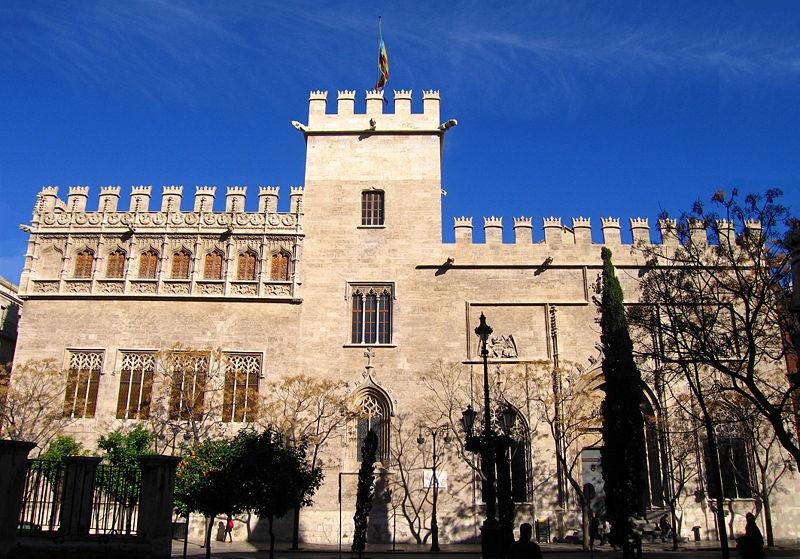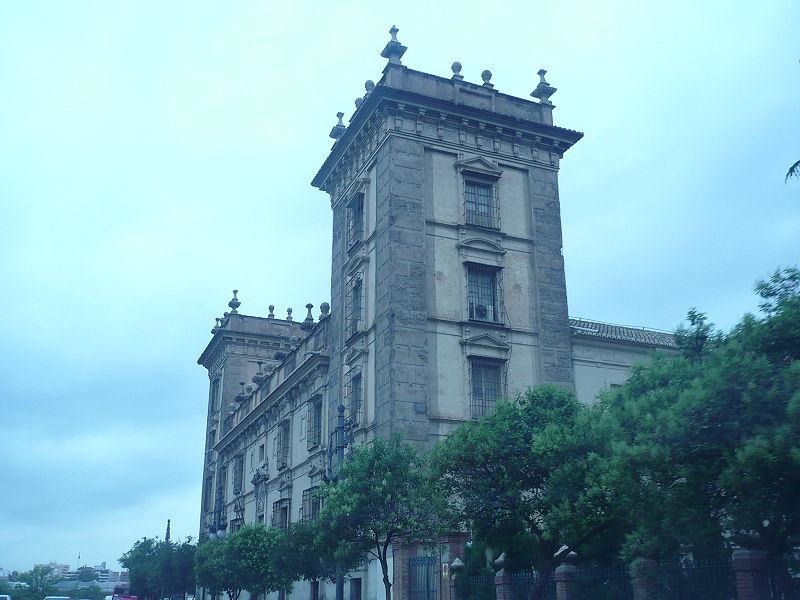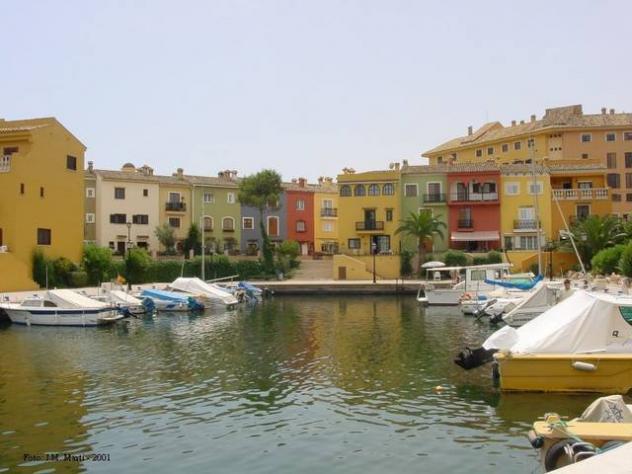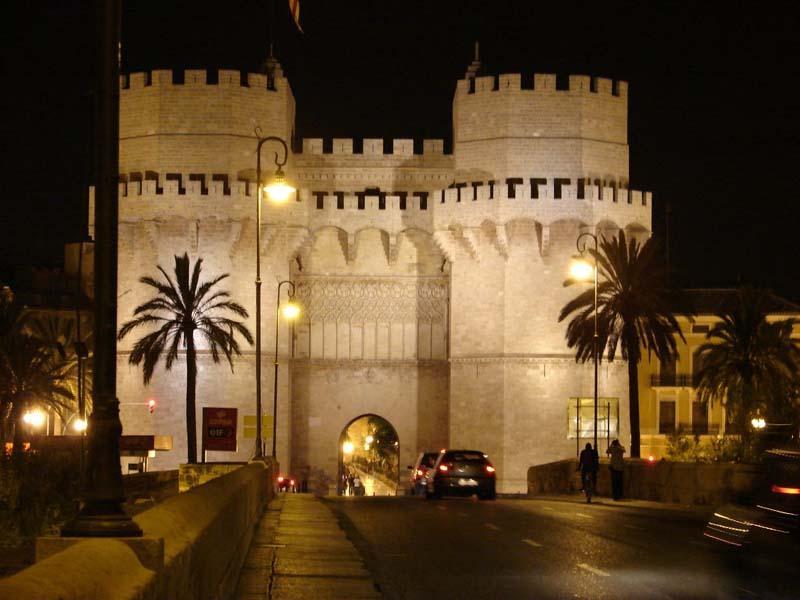Valência, Comunidade Valenciana, Spain
Suggest Place to Visit
5881
Track to location with GPS |
 |
The Roman period and the Christian-Visigothic kingdom (1st century BC - 6th century)
In 138 a. C. Valencia was founded with the name of Valentia Edetanorum by the Roman Empire, while he was Roman consul Tenth June Brutus (being one of the oldest cities in present-day Spain). In the middle of the 1st century, considerable urban growth took place in the city, and a primitive Christian community began to form at the beginning of the 4th century. In the later century (V century), it is when the first waves of Germanic peoples appear (especially Visigoths), and where Roman buildings are progressively adapting to the Christian rite, (until the arrival of the Muslim era (8th-13th centuries ).
Muslim period (8th-13th centuries)
Basilica of Valencia
At the beginning of the 8th century the city is conquered for Islam. Valencia was ruled by Agrescio when it was besieged by the Muslim hosts. Both Agrescio, the defender, and Tariq the assailant, were aware of the complexity of the situation and agreed to an advantageous capitulation, obtaining, as would happen 500 years later, but in reverse, the delivery of the city to the Muslim, and that all the inhabitants they could continue living in their homes, respect for their religion and their legal and administrative organization. Although they would have to accept the political and military authority of the conquerors and the payment of the agreed tax.
Abd al-Allah, son of Abd al-Raman I (first emir of Córdoba), settles in Balansiya (the name of the city in Arabic), and exercises an autonomous government over the Valencia area. It contributes its language, religion and customs, which coexist with that of the original inhabitants. These, the Mozarabs, were heirs of the Hispano-Visigothic culture and had Christianity as their religion and Mozarabic as their language.
The Taifa Kingdom of the Amiríes (descendants of Almanzor) begins. Time of maximum splendor of the city, where irrigation systems, crops were created and trade with Christian Spain increased.
El Cid
In July 1093 after the death of the Taifa king, El Cid, already established in Valencia as a place of exile, laid siege to Valencia, assuming the mandate of the kingdom. El Cid, allied with Pedro I of Aragon and Ramón Berenguer III of Barcelona with the purpose of jointly stopping the Almoravid push.
El Cid died in Valencia on July 10, 1099. Doña Jimena managed to defend the city with the help of her son-in-law Ramón Berenguer III of Barcelona.
The City of Valencia in the Crown of Aragon (13th – 18th centuries) [edit]
Reconquest and fueros
Banner of the Conquest, raised when Jaime I entered the city in 1238.
In 1238, the city was conquered by Jaime I with the help of troops from the order of Calatrava. The distribution of the lands was carried out as is evidenced in the Llibre del Repartiment. In 1251 the Fueros de Valencia (els Furs) were created which years later were extended to the rest of the Kingdom of Valencia. In 1348 the Black Death and successive epidemics decimate the population of the city while a citizen revolt breaks out against the excesses of the king, the war of the Union. [5] In 1363 and 1364 the city repelled twice the assault of the Castilian troops. As a prize, King Peter the Ceremonious grants the city the title of ´´Twice loyal´´, which is represented by the two L's that the city shield holds. [6] In 1391 the Christians stormed the Jewish quarter, and forced them to convert to Christianity, later in 1456 the Arabs of the city followed the same fate. Valencia was the Capital of one of the two Governorates into which the kingdom was divided: that of Valencia and that of Orihuela.
Valencian Golden Age
The 15th century is the one with the greatest expansion and growth of Valencian culture. It is known as the El Siglo de Oro Valenciano. It is accompanied by a demographic growth that placed the city as the most populated in the Crown of Aragon. Trade was reactivated with the creation of the Taula de canvis, and with the erection of the Lonja de la Seda y de los Mercaderes (1482). Obres e trobes en lahors de la Verge Maria, the first book printed in Spain, in Valencian, was printed in Valencia and there was a great boom in written works. In 1502 the University of Valencia was founded under the name of General Study.
Loss of jurisdiction
At the beginning of the 18th century, during the War of the Spanish Succession (Bourbons against Austracists), the Kingdom of Valencia aligned itself with Archduke Carlos of Austria. After the Bourbon victory in the battle of Almansa, April 25, 1707, and as punishment, the fueros of Valencia were repealed, and the Castilian jurisdiction was introduced as a basic law through the Nueva Planta Decrees, promulgated by Felipe V. Thus The same King said he changed the Capital of the Kingdom of Valencia to Orihuela as a way of outraging the city, where he ordered that the Audience meet with the Viceroy of Valencia, Cardinal Luis de Belluga, Bishop of Cartagena. Belluga opposed the change of capital given the proximity of Orihuela as a religious, cultural and now political center to Murcia (capital of his other Viceroyalty and of his Diocese), thus, given his hatred of the city of Orihuela which he bombed and looted incessantly during the War of Succession, he left the Viceroyalty of Valencia as a means of protest before King Felipe V who finally returned the Capital to Valencia.
The city of Valencia has traditionally been the great urban nucleus of a natural region called Huerta de Valencia; however, according to the regional regional division of 1987, the municipality forms a region by itself, called the City of Valencia.
The region coincides with the municipal area of the city, which includes the city and its districts, extending south to the Albufera Natural Park.
The city of Valencia borders the regions of Huerta Norte, Campo de Turia, Huerta Oeste, Huerta Sur, Ribera Baja, and to the east with the Mediterranean Sea. Regarding municipalities, the city and its districts are adjacent to the municipalities of Alboraya, Tabernes Blanques, Burjasot, Paterna, Mislata, Chirivella, in the northern districts with Almácera, Vinalesa, Alfara del Patriarca, Moncada, Bétera, Rocafort, Godella , Masamagrell, Masalfasar, Albalat dels Sorells, Albuixech, Foyos and Meliana, in the west with Quart de Poblet, in the south with Picaña, Paiporta and Sedaví and for the Albufera with Alfafar, Masanasa, Catarroja, Albal, Silla, Sollana and Swedish.
Panorama of Valencia towards the port.
Demography
Demographic evolution of Valencia (1900-2006)
Main article: Demography of Valencia
The population registered in the city of Valencia is 807,200 inhabitants (INE 2008), while its metropolitan area is home to around 1,730,853 inhabitants. The metropolitan area of Valencia is made up mainly of municipalities located in the Huerta de Valencia; some of these localities are completely conurbanized with the urban area of Valencia, such as Mislata, while the rest are located in a first or a more diffuse second metropolitan area. They stand out for their population Torrente (83,457 inhabitants), Paterna (61,941 inhabitants), Mislata (43,740 inhabitants) and Burjasot (37,667 inhabitants).
14.16% of the population registered in the city is of foreign nationality (INE 2008), coming mainly from Latin America (49.0% of foreigners registered), followed by those from other European countries (28.72 %). The most present nationalities in the city are, after the Spanish, the Ecuadorian (15,739 registered), the Bolivian (15,641 registered) and the Colombian (9,966 registered). According to the estimates of the Valencian Institute of Statistics, by 2012 the population of the city would reach 799,415 inhabitants.
Demographic evolution of the city of Valencia
1787 1857 1877 1887 1900 1910 1920 1930 1940 1950 1960 1970 1981 1991 2001 2008
Population 103,918 137,960 165,466 192,569 213,550 233,348 251,258 320,195 450,756 509,075 505,066 653,690 751,734 777,427 750,476 807,200
Source: for data from 1857 to 2008, de facto population according to the National Institute of Statistics [1].
Note: this table includes the formerly independent municipalities that were annexed by Valencia throughout the 19th century (Beniferri, Benimaclet, Patraix, Ruzafa, Benimámet, Orriols, Borbotó, Campanar, Mahuella, Pueblo Nuevo del Mar, Villanueva del Grao, Benifaraig, Carpesa and Masarrochos). The data for 1787 come from the Floridablanca census [2]
Cultural activities [edit]
Valencia has been a source and cultural refuge for centuries. Currently the cultural manifestations are very abundant. Being a Mediterranean city and following these public demonstrations with their lifestyle, many tend to take place in open spaces, supported and promoted by both official and private management.
Cinema and theater [edit]
Movies:
The Mostra de València / Cinema del Mediterrani. In October 2006 it celebrated its twenty-seventh edition. This event is internationally and a benchmark for cinema in the Mediterranean area. The various prizes awarded in the official section represent a palm tree.
Mostra Mar Cycle. A series of films, aimed at all audiences, will be shown on the Paseo Marítimo on the Malvarrosa beach. Organized by the La Mostra de València / Cinema del Mediterrani, reaffirming itself in 2008, in its fifth edition, a classic on summer nights. Being its projections suitable for all audiences and free of charge.
Short Circuit Currently there is a short film contest held continuously throughout the year in various venues in Valencia.
Cinema Jove The contest for young filmmakers in 2006 reached its twenty-first edition.
Cinema Jove is recognized by the International Federation of Film Producers (FIAPF), and is a member of the European Coordinator of Film Festivals.
Filmoteca d´ Estiu 2007 On the occasion of the summer period, the Valencian Institute of Cinematography (IVAC), also known as ´´La Filmoteca´´, moves its activities to the river Turia, making open-air film screenings in the gardens of the Palau de la Música.
Premis tirant, in the Valencian audiovisual fortnight of 2007 the ninth call will be held. Having been its headquarters in Valencia capital, it is currently looking for its exit to the rest of the Valencian regions.
Performing arts:
I SEE (València Open Scene). Festival dedicated to the performing arts, as an international theater, music and dance festival. Valencia open scene, reached its fourth edition in 2006. Their representations can be found throughout the city, in the streets, railway stations of the Generalitat Valenciana, old factories ..., as well as in theaters. Under the direction of the Valencian actor Toni Cantó.
International Performance Meeting. Organized by the IVAM and the Generalitat Valenciana, it reached its fifth edition in 2007. It continues with the character of the space of the Valencian Institute of Modern Art in organizing events and workshops of expression.
Music [edit]
The music bands of the Valencian Community are recognized all over the world, and during the month of July a contest has been held since 1886, of which in 2006 it celebrated its 120th edition. More than 2,000 musicians parade through the stages of the Palau de la Música and the Plaza de Toros. You can see more information on the official website of the International City of Valencia Music Bands Contest.
Jazz a l´IVAM, is thus called a cycle of jazz music concerts, which are held in the hall of the IVAM. The cycle will be held on Thursdays in September, as has been customary in previous editions since 2002. Admission is free until full capacity is reached.
The international piano competition ´´José Iturbi´´ is held in biannual editions. Its venue for the celebration is the Palau de la Música, and its fifteenth edition was held in September 2006. You can see more information about the event on the website of the town hall.
Festivities [edit]
Main article: Valencia festivities
In the city of Valencia there are many and very varied, some known throughout the world and others unknown even by some residents of the city, but no less important or significant. We will cite them in chronological order according to their celebration.
January: San Antonio Abad, and San Vicente Mártir (Patron of the city).
March: San José (Las Fallas).
April: Holy Week and San Vicente Ferrer (Patron of the Valencian Community)
May: Crosses of May, La Virgen de los desamparados (Patroness of the city) and Corpus Christi.
June: Festivity of San Juan.
July: July Fair.
October: October 9 (Valencian Community Day and Sant Donís Day) and Moors and Christians.
Valencia at night [edit]
Valencia is famous for its lively nightlife, which motivates "weekend getaways" from nearby cities to experience the night, such as the old cod route or the Destroy Route.
What is striking about the city and its environment is that life does not stop. We can taste good dishes in restaurants until late at night, live music, and find a multitude of lively places, pubs, discos or cafes theaters.
The highlight is that the time of year or the day of the week is indifferent, since although most leisure is focused on weekends, there is also the rest of the days. This lifestyle is not current, since it has been typical of the city for hundreds of years and the lifestyle of its inhabitants, as a way of being and never to harm others, but to cheer them up. The hustle and bustle and fun are an important part of Valencian society, an incentive that fills some foreign visitors with envy for the diversity of people you can meet, since there is no defined age group or class.
Comments
We don´t have yet any comments about:
Valencia
Valencia
Be the first to leave a comment as it is very important to inform other people
Outros locais a visitar
Within a radius of 20 km from:Valencia
Lonja de la Seda (Valencia) |
| 1,9 Km |
 |
Museum of Fine Arts of Valencia |
| 2,4 Km |
 |
Alboraya |
| 5,4 Km |
 |
Hotel reservation near Valencia within a radius of 20 km
Why to book with ROTAS TURISTICAS
The best prices
Our partnerships with the world´s largest operators offer research on the best market prices.
More options
At Rotas Turisticos you can book the hotel, buy the air ticket, book the transfer from the airport to the hotel and vice versa, book the local excursions, rent the car, take travel insurance and consult the places to visit and where to go.
Holiday Tips & Destinations
Hundreds of holiday destinations with all the options that allow you to easily choose the destination that best suits your dream vacation.
ROTAS TURISTICAS
Links






